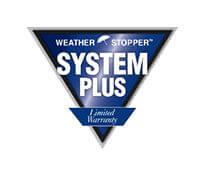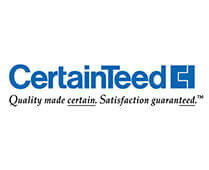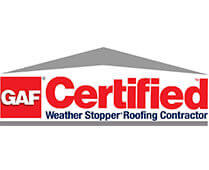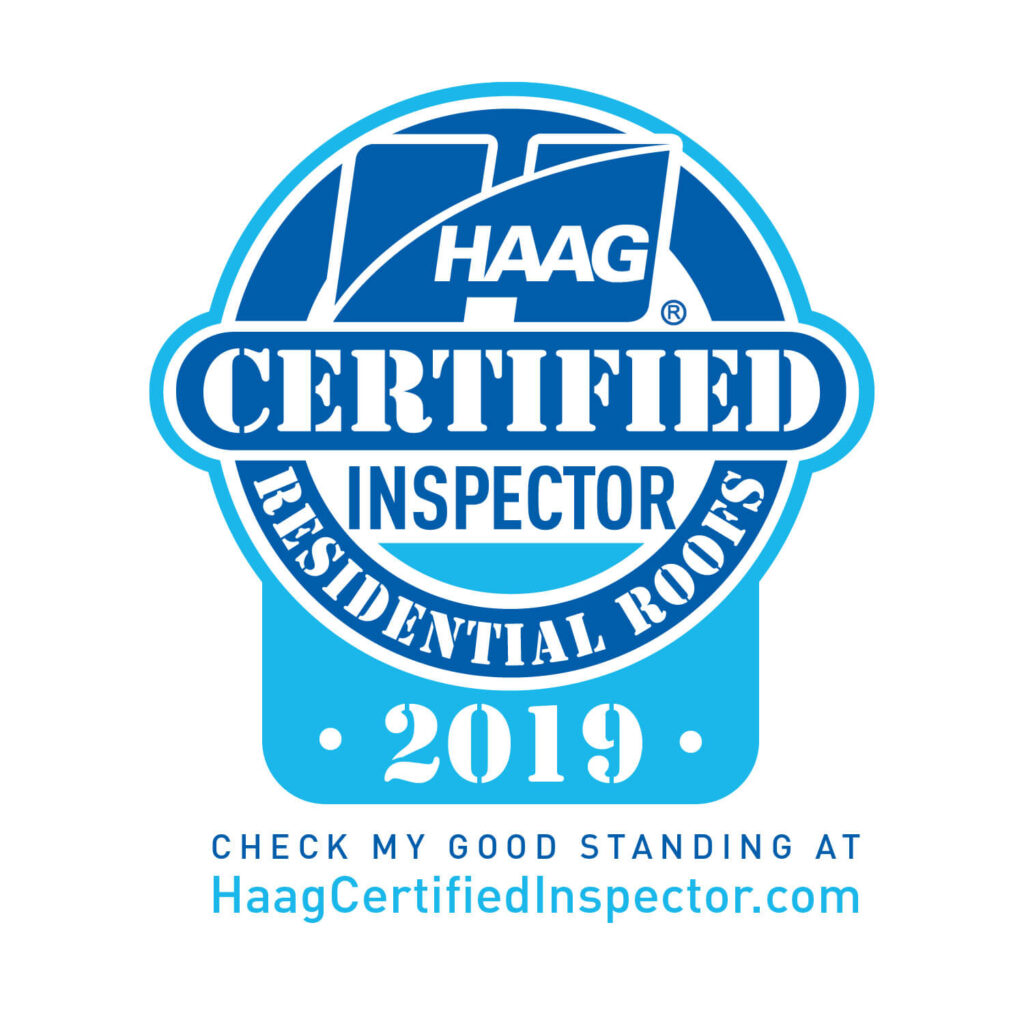Key Takeaways
- Today, Edmonton’s extreme climate is characterized by freeze-thaw cycles, heavy snowfall, and harsh winds. Therefore, it requires a strategic and tailored approach to roof maintenance that’s truly proactive.
- Inspect your roof seasonally, especially after winter and major storms, to catch damage early and address issues before they worsen.
- Tip #8—Prevent ice damming by keeping gutters and downspouts clear year-round! This stops water accumulation, ice dams, and foundation issues during Edmonton’s rainy and chilly months.
- Make it a habit to clear debris and prune branches that hang over the roof. Look out for moss or algae to keep your roof healthy and your home beautiful!
- Proper insulation and ventilation will help moisture escape, reduce ice dam risk, and save energy.
- Be realistic about your DIY capacity – In cases of larger roofing repairs or when inspection is needed, calling in local Edmonton roofing specialists will help you avoid more expensive damage and assure your safety.
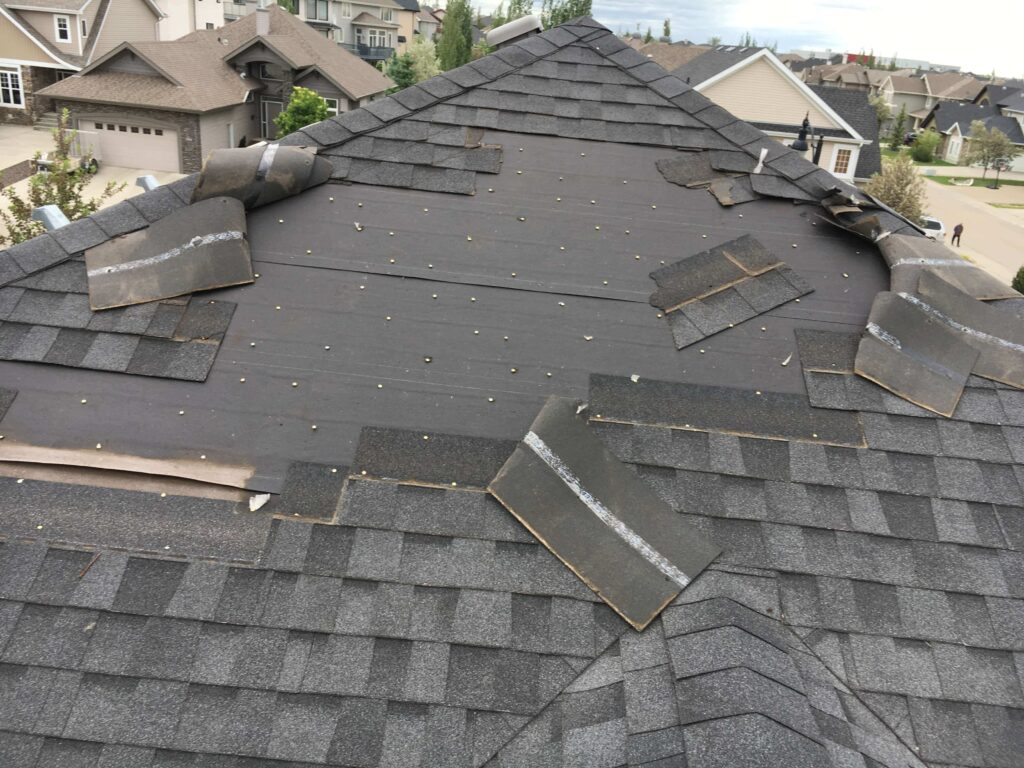
Roof maintenance tips help homeowners take actionable steps to protect their biggest asset. They stop leaks, lower expensive restoration costs, and prolong the life of roofs.
In Canada, the extreme weather shifts from heavy snow, ice and rain can be damaging to shingles. This damage commonly allows for water to penetrate into the interior. Inspecting shingles for damage, removing debris from gutters, and searching for loose flashing are easy ways to maintain your roof.
Repairing minor issues sooner rather than later prevents the need for larger scale projects down the road. Cleaning with a broom or leaf blower rather than a pressure washer will help prevent damage to shingles.
On flat roofs, regular drain clearing and vigilance for standing water will prevent leaks. These roof maintenance tips are simple and effective for the average Canadian home and can help your roof withstand the Canadian elements, year-round.
The following sections provide additional, detailed tips and guidance.
Why Edmonton Roofs Need Special Care
Over time, Edmonton’s harsh climate has presented distinct and daunting challenges for roofs that aren’t experienced in other, more temperate areas. Consistent freeze-thaw cycles, high winds, and hail are all factors that can rapidly deteriorate common roofing materials, leading to serious damage that requires vigilant monitoring and careful consideration.
Understanding what sets Edmonton apart allows homeowners and property managers to better protect their roofs for years to come.
Edmonton’s Tough Weather Impact
Edmonton experiences some of the most severe winters in Canada, with frequent cold snaps below -20°C and summers that can reach over 30°C. These variations strain roofing products, causing them to expand and contract.
Over the years, this can create cracks and gaps, allowing water and cold air to seep through. The stress is compounded by heavy snowfall during winter months. Roofs need to be designed to carry high snow loads, or else they may fail.
Unexpected thaws or rainfall on top of snow can lead to leaks. With sudden transitions between warm and cold weather, roofs made of shingles and flashing are at risk of cracking or lifting, so routine inspections are essential.
Common Local Roofing Materials
The most common type of roof material used in Edmonton are asphalt shingles and metal roofs. Although asphalt is cost-effective, quick to install, and has some aesthetic benefits, it tends to wear out much quicker in extreme cold.
Metal roofs last longer and shed snow and ice exceptionally well, but can be noisy during a hail storm or heavy downpour. Both require periodic maintenance—an examination to look for missing shingles, curled flashings, or patches of rust—preferably after any severe storm or hail.
The Freeze-Thaw Cycle Menace
The freeze-thaw cycles of winter lead to ice dams. These can block water from draining, and any trapped water can seep underneath shingles.
Ice dams usually present themselves as heavy, solid blocks of ice along the eaves of your roof. Clearing gutters and checking attic insulation help prevent these issues.
Wind: An Unseen Roof Foe
High prairie winds have a tendency to pry up shingles or remove flashings. When severe weather passes, it’s good practice to look for any missing, curled or loose shingles.
Properly securing all roof components prevents water intrusion as well as wind uplift.
Your Year-Round Edmonton Roof Plan

Maintaining an Edmonton roof is always essential, especially when guarding against the city’s fierce temperature changes. From extreme winter cold snaps to summer heat waves, every season poses new challenges. A year-round roof plan saves you from watching preventable trouble become a costly disaster.
Inspect your roof at minimum semiannually! Turn it into a ritual in spring and autumn to ensure the roof is in good shape and provide yourself with peace of mind. With a basic maintenance checklist and some advanced planning, you can address the majority of issues before they become serious ones.
Spring Thaw: Time to Inspect
As winter melts into spring, inspect roofs, siding, and windows for damage caused by snow and ice. Walk around your home and check for water stains inside. These can be signs of impending leaks from melting snow.
Check for standing water or blisters on the roof shingles. Gutter cleaning and downspout extensions allow water to run freely during the spring thaw and rains. This goes a long way toward preventing ice dams next winter.
Summer Upkeep: Sun and Storms
Summer upkeep involves protecting your roof from the sun and sudden storms. Look for blistered, cracked, curled, or faded shingles—indicators the sun has had its way.
Tighten any new or loose shingles and flashing, particularly around skylights, vents, and chimneys. Remove debris like branches and leaves, which can trap moisture and lead to rot.
Autumn Prep: Gutters and Leaves
Before things freeze up, get those gutters cleaned out. This allows water to flow away from your home, preventing ice dams from occurring down the line. Be especially vigilant in valleys and eaves, where leaves can accumulate.
A professional roof inspection today can identify issues before the snow starts to fall.
Winter Watch: Snow and Ice Dams
Watch for large accumulations of snow. If it becomes deep, remove snow with a roof rake, taking care not to damage your roofing material. Keep an eye out for ice dams that form along the eaves—these can lead to serious leaks and water damage.
Look indoors, too, for signs of wetness or dripping. If you notice something abnormal, contact a qualified Edmonton roofer that is proven and certified in your area.
Essential Roof Care Actions
A properly maintained roof defends your home’s interior environment and helps you avoid high energy bills. Establishing a regular maintenance schedule allows you to catch small issues before they grow into more serious and costly repairs.
It extends your roof’s lifespan by years! Those good habits extend to aesthetics and performance. Documenting your roof care activities will help you better track the need for repairs and plan for the future.
1. Keep Gutters & Downspouts Clear
Keeping gutters clean is especially important in Los Angeles, where dry leaves and debris from winter storms can accumulate quickly. When gutters are clogged, water backs up and can damage the roof as well as the wall.
Ensure downspouts aren’t clogged and that they drain water away from your home’s foundation. Gutter guards can reduce the debris build-up and keep the water flowing where it needs to go.
2. Remove Debris Buildup Safely
Leaves, sticks, and dirt build up on rooftops, particularly after a windstorm or during autumn. Manual debris removal is essential.
Action: Use a soft-bristle broom or leaf blower. If you must go up, always wear protective shoes and use a safety harness. Frequent cleanings—ideally, twice per year—prevent moisture from becoming trapped and leading to rot.
3. Inspect Shingles and Flashing
Take a stroll around your home and check for missing, cracked, or curled shingles. Inspect shingles and flashing to ensure there’s no damage or deterioration.
Focus particularly on flashing around chimneys and vents—loose or rusty areas can cause leaks. If there is an issue, address it immediately. Rapid remedies prevent major migraines down the road.
4. Manage Moss and Algae Growth
Shady patches encourage the growth of moss and algae, which retain moisture and compromise shingles. Apply a mild cleaner and scrubber to remove stains.
Installing zinc strips along the roof ridge will prevent any new growth from taking hold.
5. Trim Overhanging Tree Branches
Branches that overhang roofs will drop debris, leaves, and rub the roof surface. Cut them back enough to allow direct sunlight and air to enter your roof.
This helps to keep the roof dry and prevents moss from growing.
Smart Systems: Vents and Insulation
Smart roof systems rely on vents and insulation to function in tandem. Together, these features strengthen your roof’s defense. They help keep your home comfortable and energy costs low. When ventilation is done correctly, moisture and heat can’t accumulate beneath the roof. This will prevent the onset of mold and rot.
It stops the formation of ice dams in cities like Los Angeles, where warm spells and cool nights combine. Preventive measures like regularly inspecting vents for blockages or damage yield year-round dividends.
Good Airflow Prevents Problems
Proper attic ventilation helps prevent moisture and heat buildup. Ridge vents along the roof’s peak allow hot air to escape. Soffit vents along the eaves of the roof allow fresh air to enter the attic. When these vents function in harmony, hot, stuffy air escapes, and fresh, cool air enters.
This equilibrium decreases attic temperatures during the summer months and prevents ice damming along the roof edge in the winter. Solar roof vents are another option to increase airflow, particularly useful during those hot summer afternoons when the sun is directly overhead.
If snow accumulates to the point where it covers vents, use a roof rake to remove it that way, but avoid damaging underlying shingles.
Insulation’s Role in Roof Health
Insulation helps maintain a pleasant temperature. Find out if they are laid down evenly so cold spots and drafts don’t creep in. Insulation that is missing or has been compacted over time may lead to significant heat loss and increased energy costs.
Watch out for moisture or mold. If you notice any, replace the damaged areas. Properly placed insulation leads to the elimination of ice dams and year-round comfort.
Ensure Vents Expel Air Outside
Make sure vents expel air outside, not into attic or crawlspace. Make sure vent covers are clean to remove leaves, dust, or even small animal nests.
An annual or biannual professional inspection will help identify trouble spots before they have a chance to escalate into major problems. When vents operate correctly, your HVAC system won’t have to overexert itself.
Spot Damage: Early Warning Signs

Catching roof damage from the ground early prevents small issues from snowballing into gigantic—and costly—ones. Most homeowners don’t realize there is a problem until they have leaks or mold appearing. Performing routine inspections, documenting findings, and understanding what to inspect for are key to preventing this.
That way, you can avoid expensive rehabilitation or water infiltration in the future.
What to Look For Inside Home
Begin by inspecting ceilings and walls. Ceiling water stains or yellow spots could indicate a roof leak. Rooms with major drafts or strange cold spots can indicate holes in the roof or attic.
Mold or mildew, particularly in corners or around vents, usually indicates ongoing, unseen leaks. Since over 50% of roof issues initiate from the attic, this is an important place to look.
Outdoor Clues of Roof Trouble
Get out of the house and get up on the roof. Shingles that are curled, buckled, or missing are clear warning signs. If you notice shingles in the guttering system, this indicates the roof is reaching the end of its life.
Even minor sagging areas on the roof can indicate larger issues with the roof structure. After large storms or significant wind events, these signs are more likely to appear and require immediate response.
Safe Ground-Level Roof Checks
Stay safe. Be sure to use binoculars to inspect the roof from a distance on the ground. This allows you to identify missing or loose shingles without having to climb up.
Take notes on what you observe and photograph for documentation. If more than 20% of your shingles are damaged, you should start preparing to replace your roof.
Sharing your notes with a pro ensures you’re getting the right fix.
DIY Care vs. Calling Edmonton Pros
Roof care in Edmonton might seem like a gamble. You just need to know when to DIY and when to contact an Edmonton professional! Climate adds a lot of snow, freeze-thaw cycles and wind, so roofs in this climate deal with very real stresses. Some projects are easily manageable, but some require knowledge and equipment that only pros should possess.
When DIY Maintenance Works
Basic maintenance—such as clearing gutters or sweeping leaves—will assist in moving water away from your house. For example, you can check for cracked or missing shingles, moss growth, or rust on flashing. With the abundance of online videos and guides, people can easily follow step-by-step directions to patch small leaks or replace a few shingles.
This is a great tactic to stretch your dollars further! None of these jobs require years of roofing expertise, but they do require a watchful eye.
Know Your Safety Limits Well
Consider your own comfort level and experience working at heights before stepping onto a roof. Always bring a sturdy ladder and non-slip boots! If you’re going to be working up high, harness in for additional fall protection.
If your roof is particularly steep or weather conditions are icy, you’re better off waiting for a pro. The overwhelming majority of these injuries occur when homeowners overestimate their safety or underestimate the need for proper equipment.
Why Pros Can Save You Money
Roofers can catch trouble before it starts—camouflaged leaks, signs of weakness, or deteriorated shingles. Repairing them when they first appear is usually easier and therefore cheaper to fix in the long term. Getting those shingles lined up perfectly isn’t as easy as it looks and requires some serious craftsmanship.
Professionals save you money. Pros have the tools, knowledge, and experience to complete repairs quickly and accurately.
The Value of Professional Inspections
Having a trusted Edmonton roofing professional inspect your roof annually will help identify issues while they’re still manageable, saving you the risk and expense of a full replacement. Their insights inform your budgeting for major repairs, as well as ongoing maintenance and care.
With their assistance, you receive accurate information regarding the actual condition of your roof.
Conclusion
If you want to ensure your roof stands tall against storms in Edmonton, don’t go overboard and do the bare minimum. Inspect your shingles following major storms. Regularly remove snow and ice. Don’t forget to keep your roof clear of snow and ice, too! Look out for ice dams, leaks, or sagging areas. Replace rusty vents with vinyl ones, or install more insulation if your attic gets too hot in the winter. While some repairs may be manageable for a hot shot weekend warrior, extensive damage or difficult pitches require an experienced local professional. Regularly following these steps saves you a lot of stress and money. A solid roof translates to a cozy, dry abode year-round—especially during Alberta’s unpredictable tempestuous climate. Have a roofing concern or need an expert inspection? Contact local professionals and get honest recommendations and straightforward answers. Until next time, stay safe and keep your roof maintained to avoid costly repairs.
Frequently Asked Questions
Why does Edmonton’s climate demand special roof care?
Edmonton’s severe winters, significant snowfall, and freeze-thaw cycles can lead to serious roof issues. Prevent leaks, ice dams, and shingle loss with routine roof maintenance to increase your roof’s longevity.
How often should I inspect my roof in Edmonton?
Inspect your roof at a minimum of twice a year—every spring and every fall. In addition to your regular inspections, make sure to check after every major storm to identify problems before they become expensive repairs.
What are early signs of roof damage in Edmonton?
Watch out for any missing shingles, shingles with curled edges, ice dams, or ceilings with water stains, as well as granules accumulating in gutters. Catching damage early can prevent much larger issues down the line.
Can clogged gutters affect my Edmonton roof?
The answer is yes, clogged gutters can cause water backup, ice dams, and roof leaks. Maintain your gutters to prevent water damage. Don’t let clogged and overflowing gutters pour water down the side of your home.
What’s the benefit of proper attic ventilation and insulation?
Proper ventilation and insulation will stop the heat from escaping and causing ice dams. Most importantly, they protect your roof during the harshest weather Edmonton has to offer.
When should I call a roofing professional in Edmonton?
Call a pro if you find extensive damage, leaks or if you’re not confident making the repair. Only trained professionals have the experience and equipment needed to get the job done safely and efficiently.
Is DIY roof maintenance safe in Edmonton?
Basic maintenance, such as cleaning gutters, can be done safely with precautions. In the case of complicated repairs or steep roofs, hiring a licensed Edmonton roofer is the safest way to prevent injury and guarantee quality work.
Not what you were looking for? Safe Roofing also offers the following services:
Safe Roofing’s Certifications and Qualifications
Manufacturer Certification: IKO (preferred installer)

